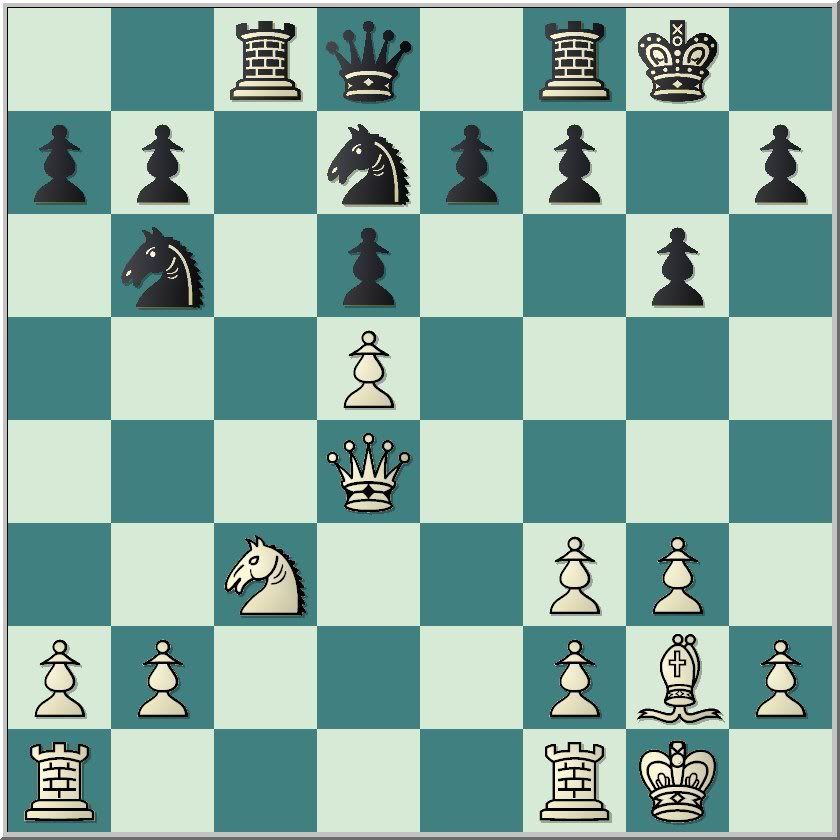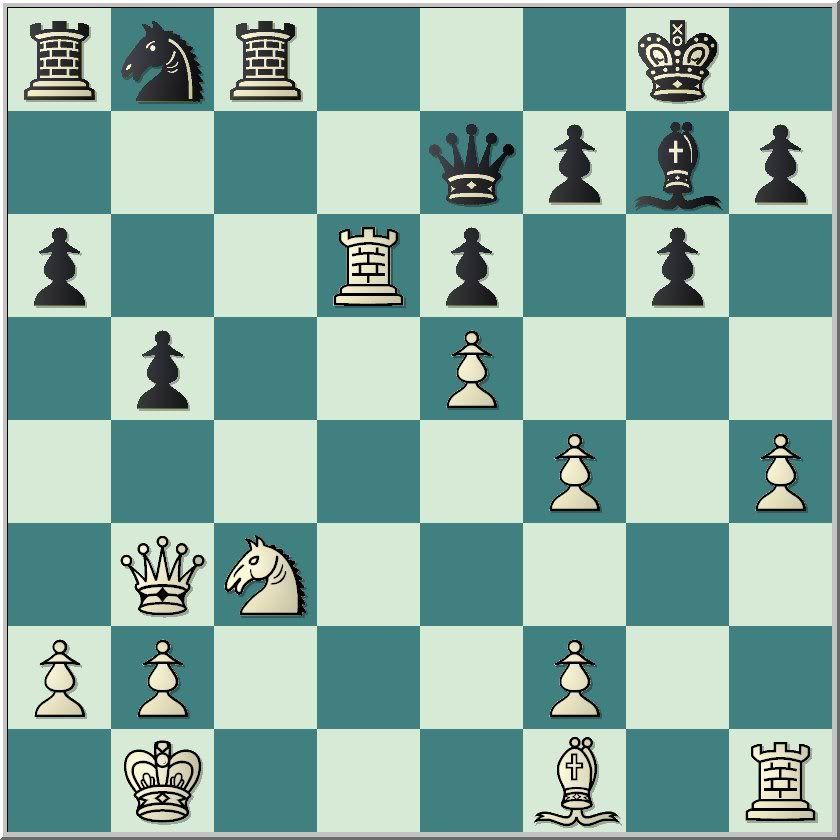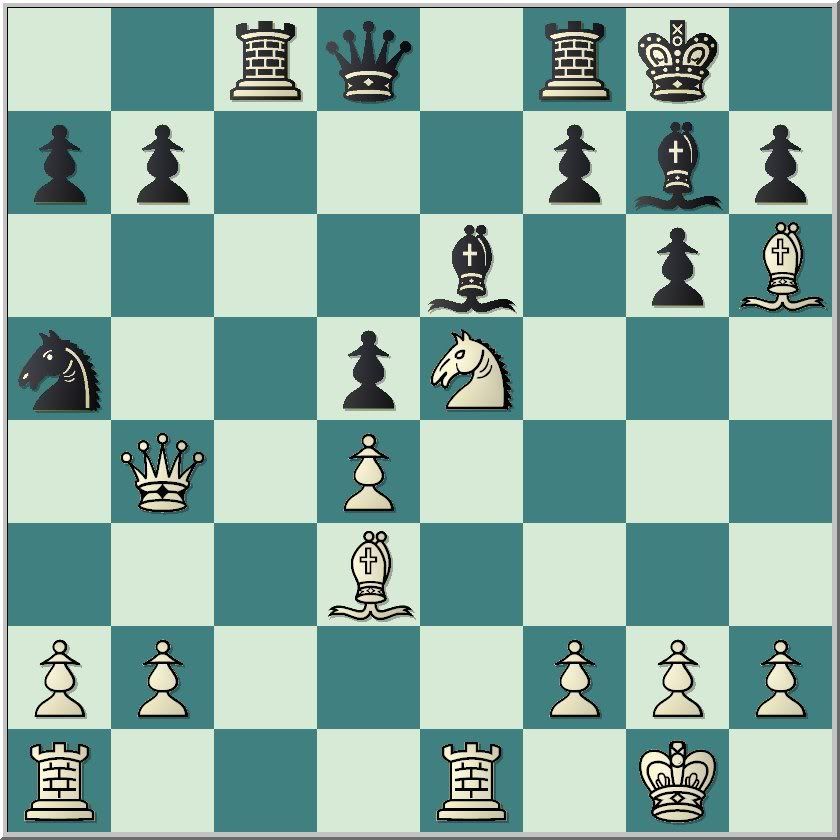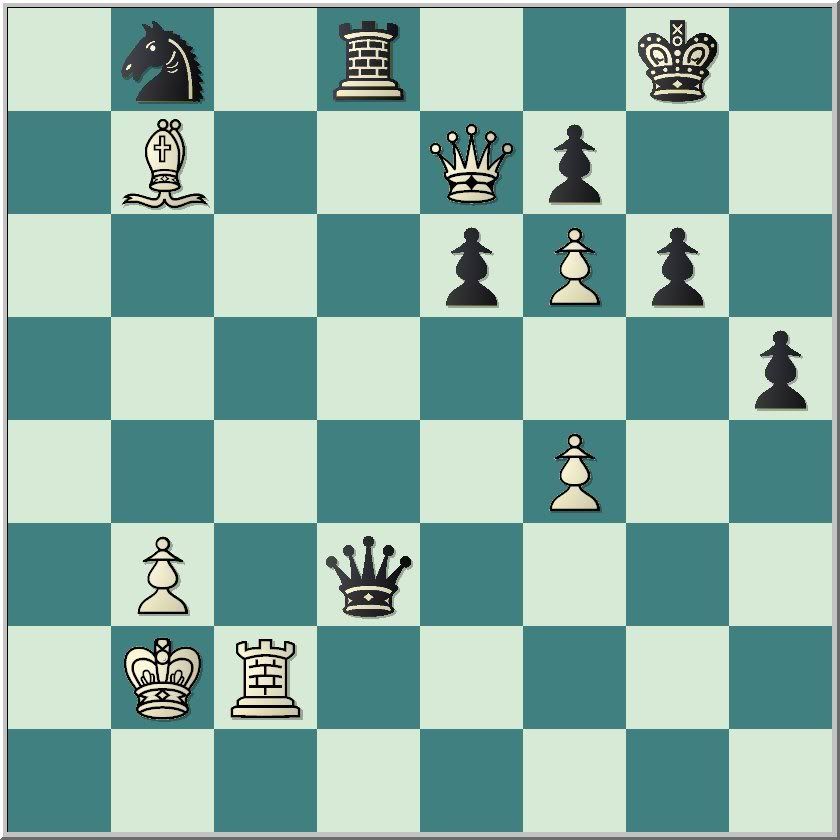In the Corus Chess Tournament, Grandmaster A Group in Wijk aan Zee, Netherlands, Sergei Movsesian leads after eight rounds. He is the fifth seed, and the tenth highest on the FIDE rating list. His recent move into the top ten results from
rapid improvement in his performance. He won the Corus B Group in 2008, earning entry into this year's A Group. At the time he was
number 42 on the FIDE rating list. In January 2007, he was number 74. His rating crossed 2700 for the first time in July 2008.
Current Standings1. Sergei Movsesian 5
2. Levon Aronian, Sergei Karjakin, Leinier Dominguez, Teymour Radjabov 4 ½
6. Magnus Carlsen, Loek van Wely, Gata Kamsky, Michael Adams, Jan Smeets 4
11. Daniel Stellwagen, Vassily Ivanchuk, Wang Yue 3 ½
14. Alexander Morozevich 2 ½
I'm following several games as they unfold today: Karjakin - Movsesian and Kamsky - Aronian are both between players still in contention. Dominguez - Stillwagen and Morozevich - Radjabov both pit a potential leader against a player near the bottom of the standings. With five rounds to play, no player is completely out of the running, but it is unlikely that tail-ender Morozevich will win five straight. Even if he does, 7 ½ might be good enough for third place, but not first.
Magnus Carlsen, Levon Aronian, and Leinier Dominguez have yet to lose a game in this event. Carlsen and Daniel Stellwagen are the only players without a win.
Dominguez had a supported passed pawn already by move nine against Stellwagen. But, that's a frequent concession Black makes in the French Winawer.
Dominguez - Stellwagen [C18]Corus Chess (9), Wijk aan Zee 2009
1.e4 e6 2.d4 d5 3.Nc3 Bb4 4.e5 c5 5.a3 Bxc3+ 6.bxc3 Ne7 7.Qg4 Qc7 8.Qxg7 Rg8 9.Qxh7 cxd4 10.Ne2 Nbc6 11.f4 Bd7 12.Qd3 dxc3 13.Rb1 0–0–0 14.Nxc3 Na5 15.h3 Kb8 16.g4 Rc8 17.Nb5 Bxb5 18.Rxb5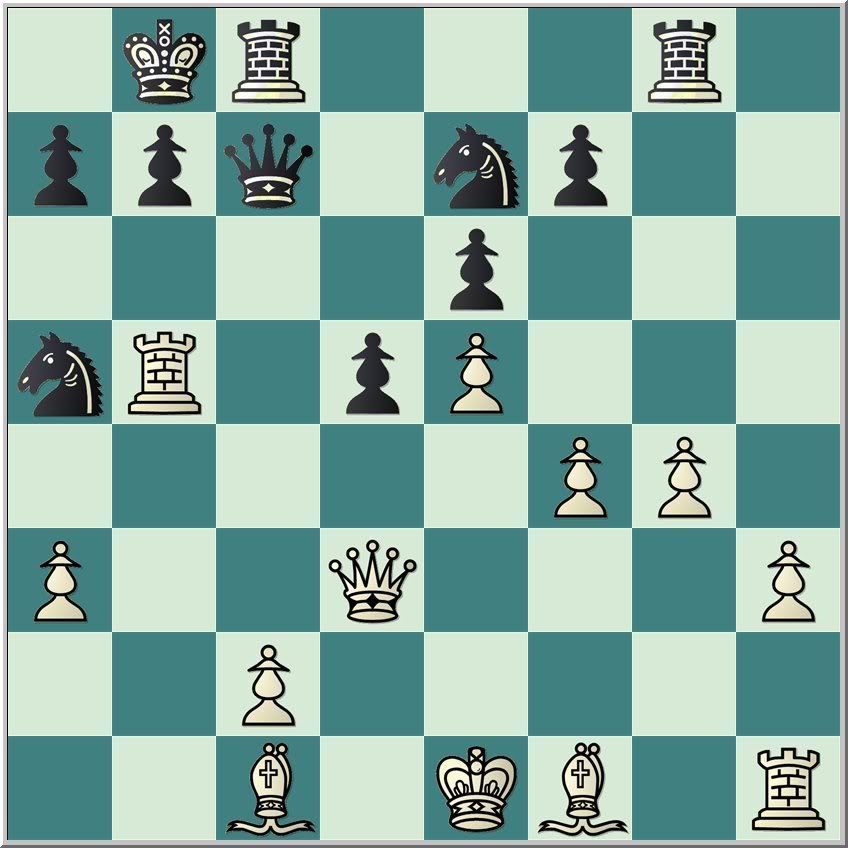
Aronian's king moved thrice in the first eighteen moves against Kamsky, but that's not terribly unusual in the Berlin Defense in the Spanish Opening (or Ruy Lopez).
Kamsky - Aronian [C67]Corus Chess (9), Wijk aan Zee 2009
1.e4 e5 2.Nf3 Nc6 3.Bb5 Nf6 4.0–0 Nxe4 5.d4 Nd6 6.Bxc6 dxc6 7.dxe5 Nf5 8.Qxd8+ Kxd8 9.Nc3 h6 10.b3 a5 11.a4 Be6 12.Ne2 Bd5 13.Rd1 Kc8 14.Ne1 g5 15.Bb2 Bg7 16.Nd3 b6 17.f3 Kb7 18.Kf2 Be6 19.g4 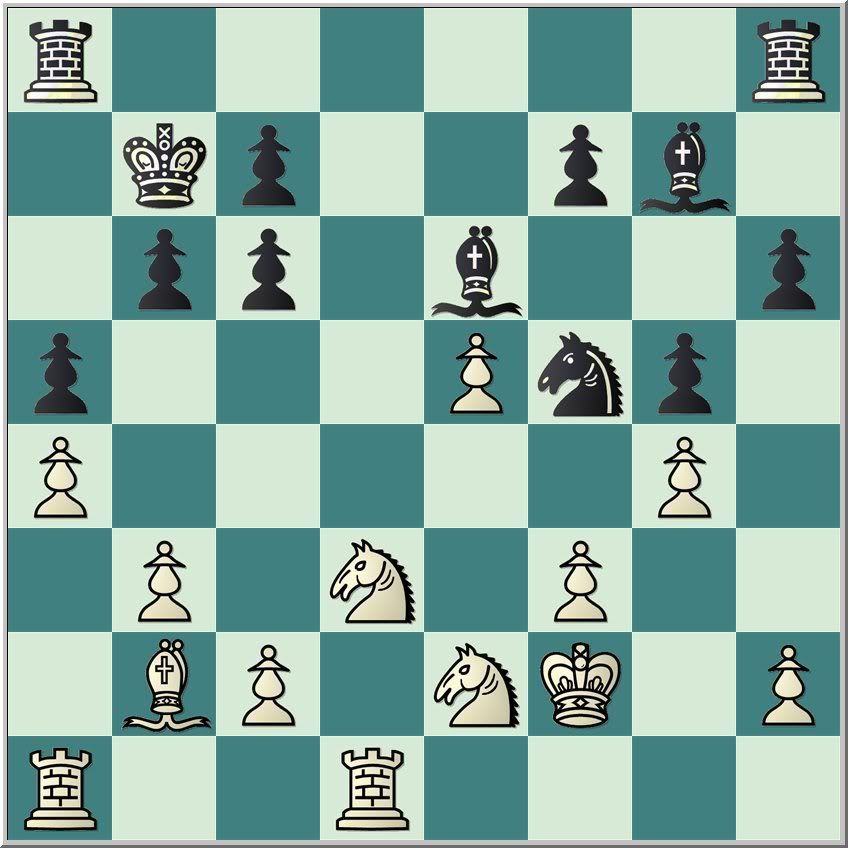
Radjabov's Grunfeld has produced symmetrical pawns and clerics against Morozevich, and perhaps transposed into an English; Moro's only draw so far in the event was in the game against Michael Adams.
Morozevich - Radjabov [D73]Corus Chess (9), Wijk aan Zee 2009
1.d4 Nf6 2.c4 g6 3.Nf3 Bg7 4.g3 c5 5.Bg2 cxd4 6.Nxd4 0–0 7.0–0 d5 8.cxd5 Nxd5 9.Nb5 Be6 10.N1c3 Nxc3 11.Nxc3 Nc6 12.Qa4 Qb6N 13.Qa3 Rfd8 14.Be3 Qa5 15.Qxa5 Nxa5 16.Rac1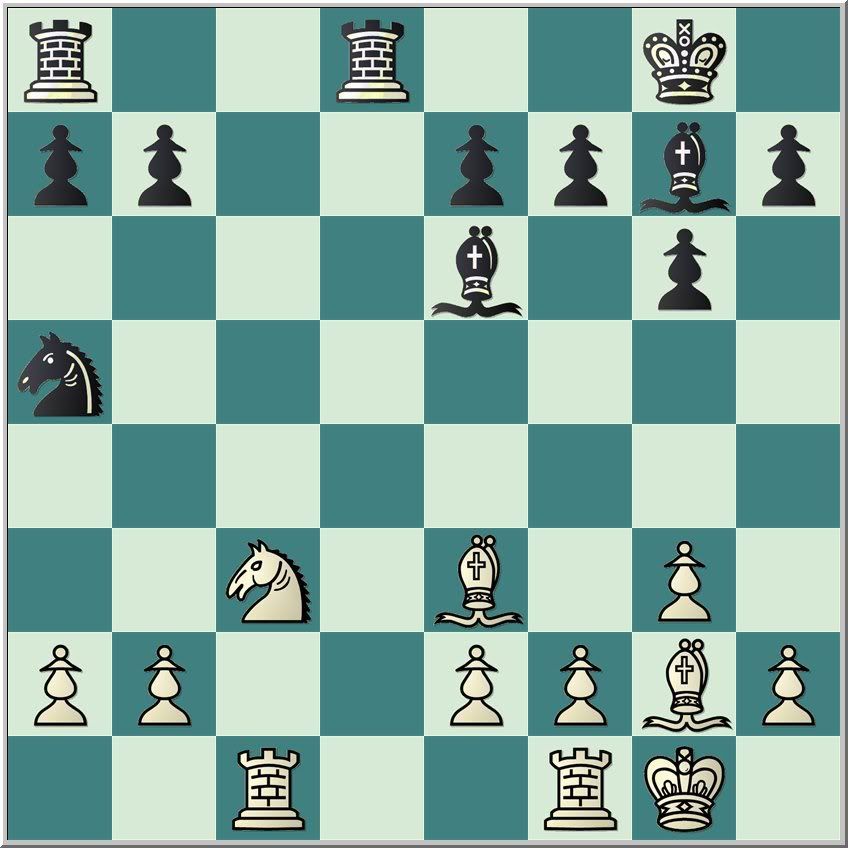
Movsesian struggles to maintain his lead against Karjakin with a Sicilian Scheveningen.
Karjakin - Movsesian [B80]Corus Chess (9), Wijk aan Zee 2009
1.e4 c5 2.Nf3 d6 3.d4 cxd4 4.Nxd4 Nf6 5.Nc3 e6 6.Be3 Nc6 7.f3 Be7 8.Qd2 0–0 9.g4 d5 10.g5 Nxd4 11.Qxd4 Nh5 12.0–0–0 Bxg5 13.Kb1 Kh8 14.Bxg5 Qxg5 15.Rg1 Qf4 16.Qc5 Bd7 17.exd5 Nf6 18.Bh3 exd5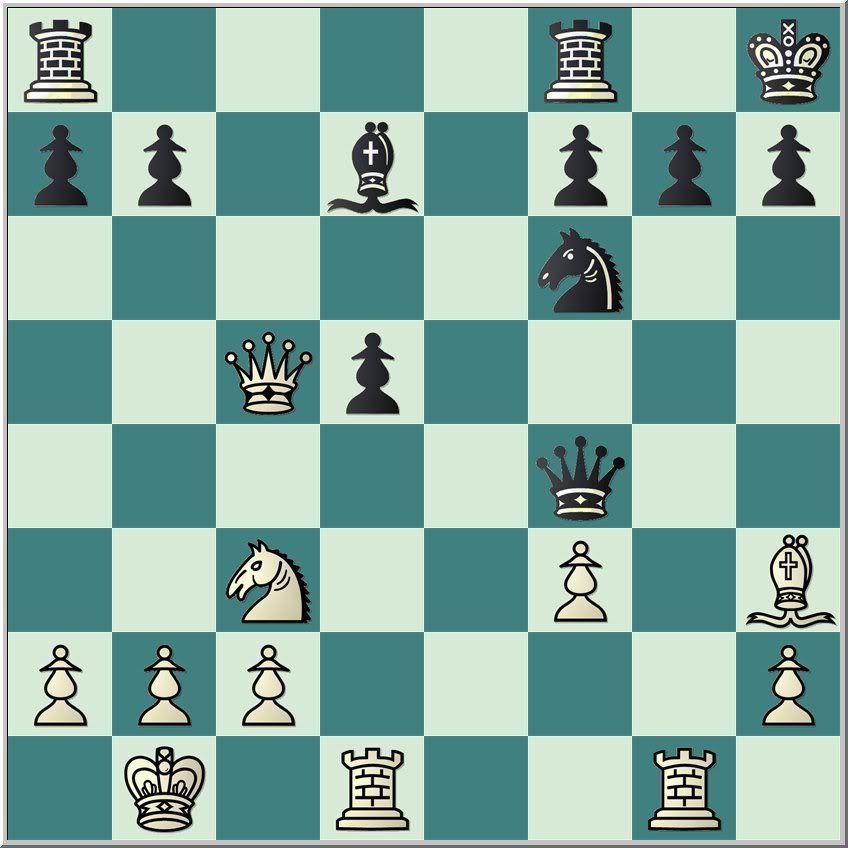 Ready for Bets?5:54am PST; 2:54pm CET
Ready for Bets?5:54am PST; 2:54pm CETOf these four games, Dominguez - Stillwagen appears to offer the best prospects of a decisive result, but I would not put any money on it.
Morozevich - Radjabov Update16...Rac8 17.Bxa7 Rd2 18.b4 Bxc3 19.bxa5 Bxa5 20.Bxb7 Rxc1 21.Rxc1 Rd7 22.Rb1 Bxa2 23.Rb2 Bc3 24.Rxa2 ½-½There's no symmetry and a bit more fight in the Grunfeld I have going against a
fellow blogger on one of those turn-based sites. That is not to say there is nothing we patzers cannot learn from this short grandmaster draw. Nor am I as convinced as many commentators that draconian measures are warranted to prevent top players from desisting from conflict in positions they deem not worth fighting about.
Let me put it another way: Radjabov played aggressively as Black, pieces came off rapidly. After 24 moves, these grandmasters, who are so good they can play me and thirty others of my strength simultaneously and win most if not all, reached a position that I can hold eight out of ten times against a computer that can beat them. The position may not be a "dead draw", but only an egregious blunder of the sort grandmasters do not make (well, usually not) can offer either player a slim chance of victory.
Kamsky - Aronian Update19...Ne7 20.Ng3 Rhd8 21.h3 c5 22.f4 c4 23.bxc4 Bxc4 24.f5 Nc6 25.e6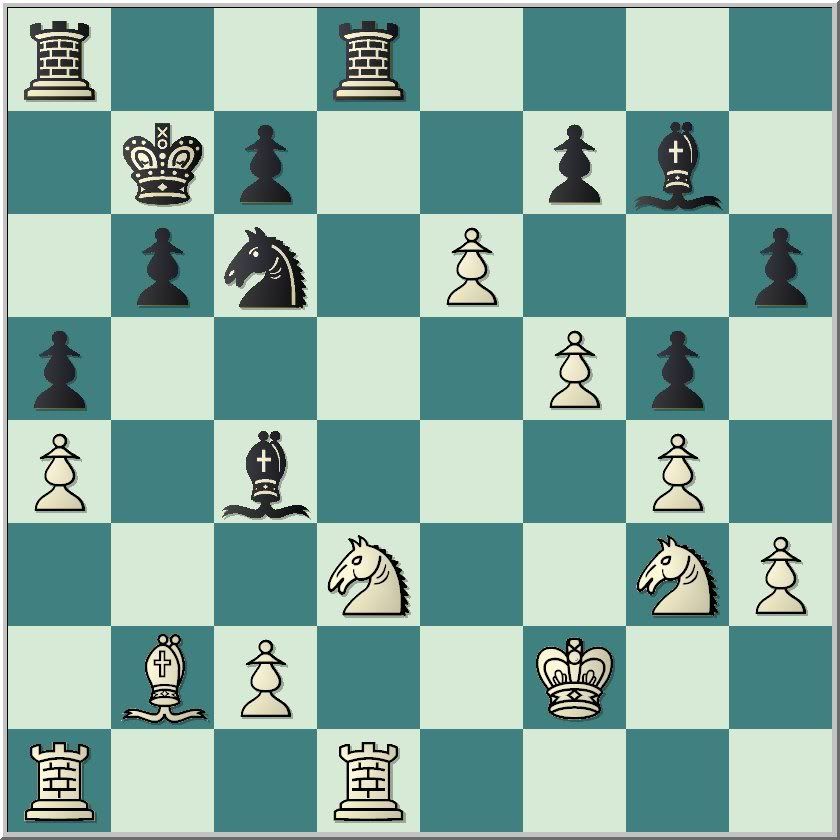 25...Bf8 26.exf7 Bxf7 27.Ne4 Bc4 28.Bf6 Re8 29.Kf3 Ka7 30.Ndf2 Ba6 31.h4?! gxh4 32.Bxh4Carlsen remains undefeated in this year's Corus tournamentAdams - Carlsen [B70]
25...Bf8 26.exf7 Bxf7 27.Ne4 Bc4 28.Bf6 Re8 29.Kf3 Ka7 30.Ndf2 Ba6 31.h4?! gxh4 32.Bxh4Carlsen remains undefeated in this year's Corus tournamentAdams - Carlsen [B70]Corus Chess (9), Wijk aan Zee 2009
1.e4 c5 2.Nf3 d6 3.d4 cxd4 4.Nxd4 Nf6 5.Nc3 g6 6.Bc4 Bg7 7.0–0 0–0 8.Re1 Bg4 9.f3 Bd7 10.Be3 Nc6 11.a4 Ne5 12.Bf1 Rc8 13.a5 a6 14.Nd5 Nxd5 15.exd5 Nc4 16.Bxc4 Rxc4 17.c3 Re8 18.Nc2 Ra4 19.Bb6 Rxa1 20.Qxa1 Qc8 21.Ne3 e5 22.dxe6 Rxe6 23.Qd1 Qe8 24.Kf2 Qe7 25.g3 Qg5 26.Qd5 Qxd5 27.Nxd5 Rxe1 28.Kxe1 Kf8 ½–½
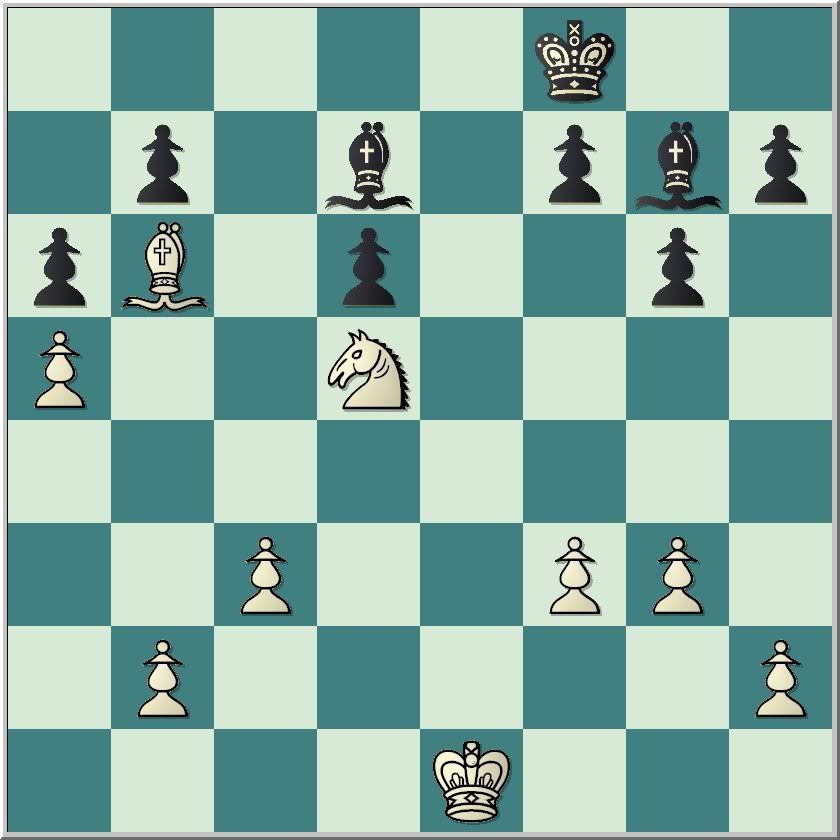 7:30am PST; 4:30pm CETKarjakin - Movsesian Update
7:30am PST; 4:30pm CETKarjakin - Movsesian Update
19.Bxd7 Nxd7 20.Qxd5 Nf6 21.Qxb7 Qxh2 22.Ne4 Nxe4 23.Qxe4 Rad8 24.a4 Qc7 25.Rxd8 Rxd8 26.Rg5 g6 27.Rb5 Rd1+ 28.Ka2 Rd7 29.c4 Kg7 30.c5 a6 31.c6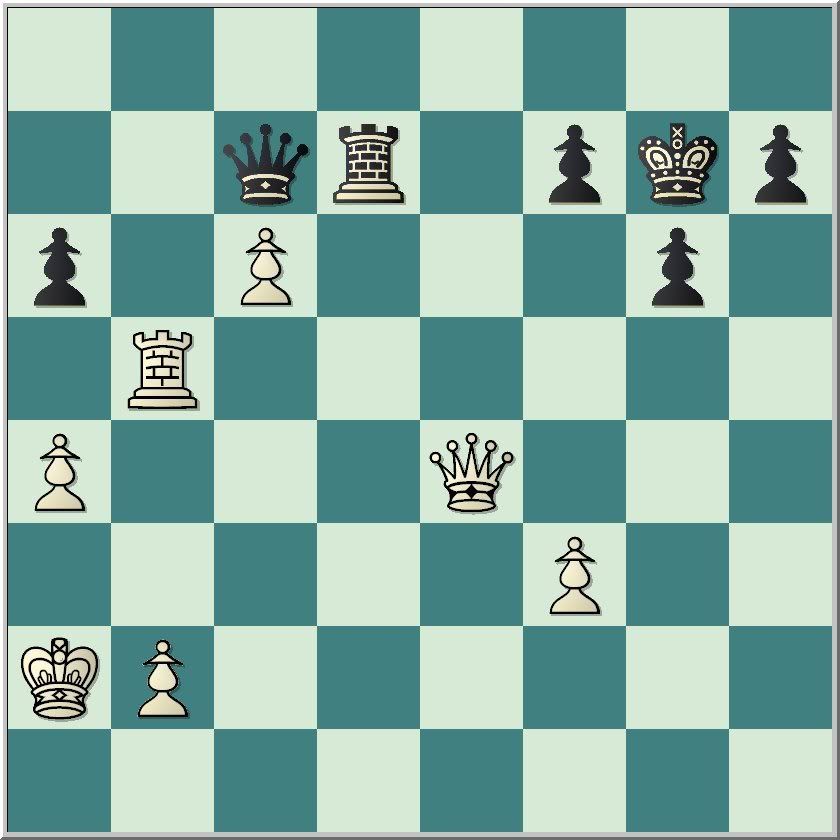 31... axb5 32.cxd7 Qxd7 33.Qe5+ Kf8 34.axb5 h5 35.Kb3 Kg8 36.b6 h4 37.Qc7 Qd1+ 38.Kb4 Qe1+ 39.Kb5 Qe2+ 40.Ka5 Qd2+
31... axb5 32.cxd7 Qxd7 33.Qe5+ Kf8 34.axb5 h5 35.Kb3 Kg8 36.b6 h4 37.Qc7 Qd1+ 38.Kb4 Qe1+ 39.Kb5 Qe2+ 40.Ka5 Qd2+They continue to slug it out in a queen and pawn endgame with plenty of passed pawns. This could be one of those games when the players are happy that many chess sets come with four queens. No upside-down rooks will be needed here.
White to move
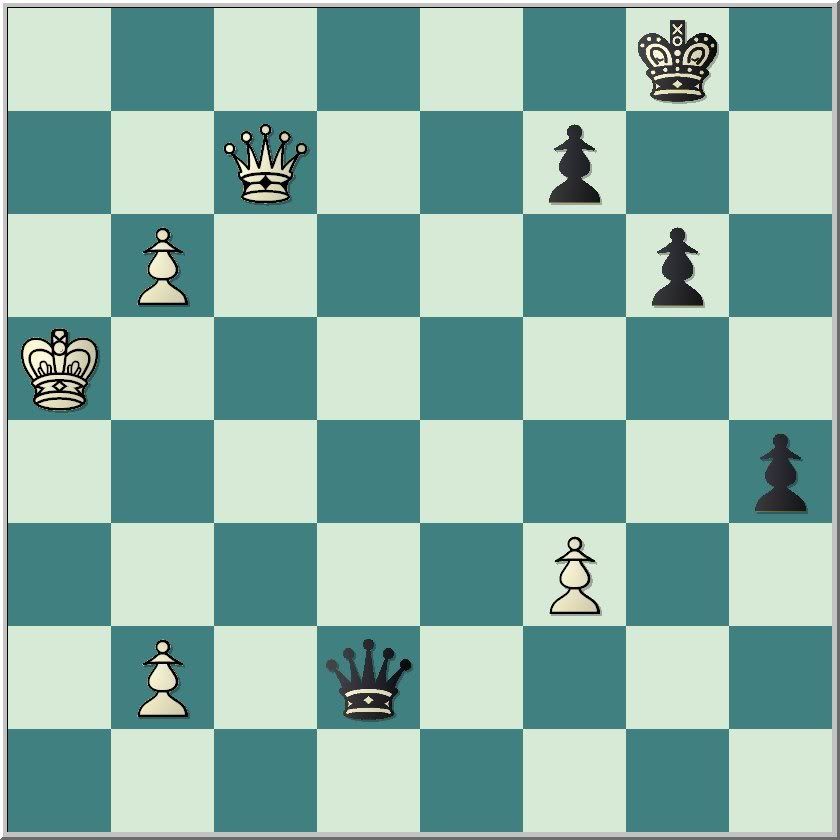 8:15am PST; 5:15pm CET8:27am Prediction
8:15am PST; 5:15pm CET8:27am PredictionAt the end of this round, three players will be tied for first: Movsesian, Aronian, and Dominguez with 5 ½ each.
Kamsky - Aronian Update32...Bb7 33.Kf4 Nb4 34.c4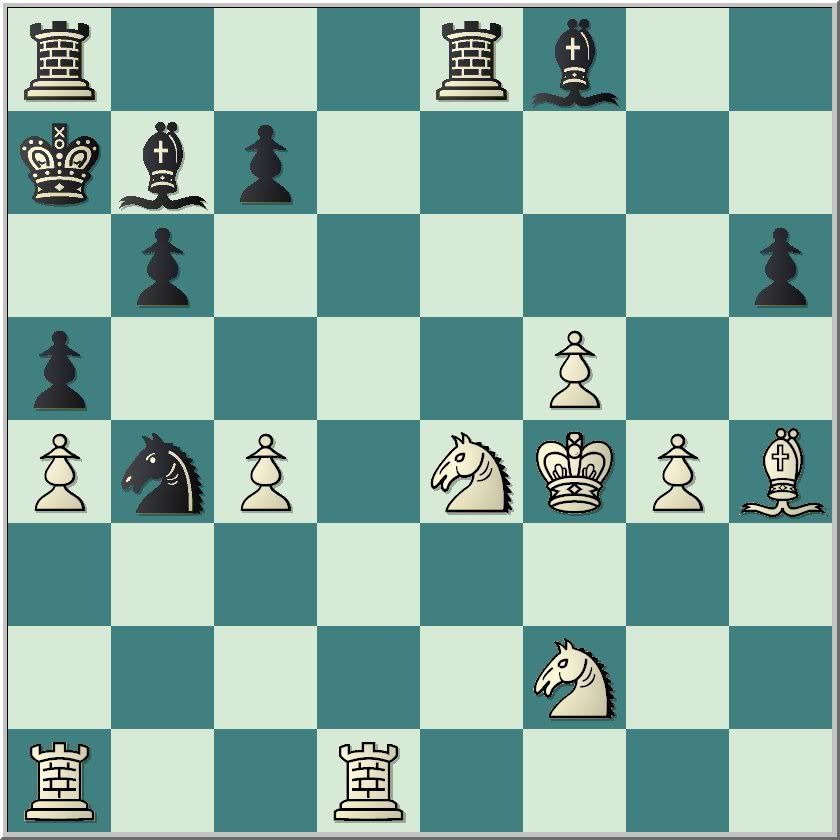 34...Na6 35.Nc3 Bc6 36.Nfe4 Nc5 37.Nf6 Re7 38.Nh5 Rf7 39.Nb5+ Kb7 40.Ra2 Re8 41.Nf6 Ree7 42.Nd4
34...Na6 35.Nc3 Bc6 36.Nfe4 Nc5 37.Nf6 Re7 38.Nh5 Rf7 39.Nb5+ Kb7 40.Ra2 Re8 41.Nf6 Ree7 42.Nd4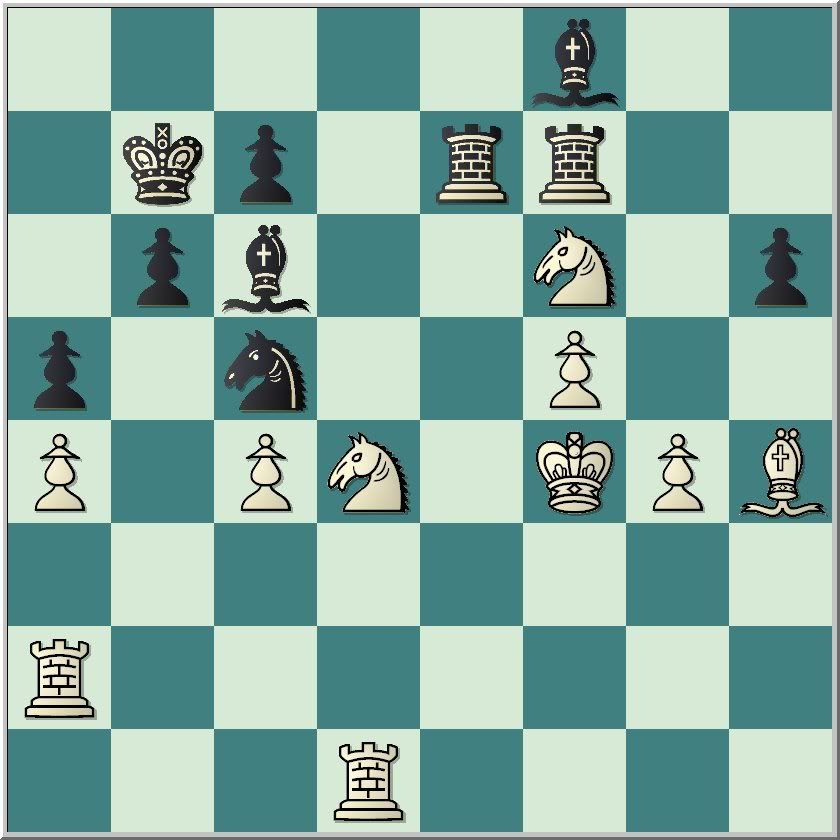
Black (Aronian) has better pawn structure and a bishop pair: two advantages in the late middlegame. He still has much work to press the advantage, but a win puts him in a share of the lead. Moreover, a win with Black always confers certain psychological advantages, especially going into the late rounds.
42...Bxa4 43.Rxa4 Bg7The bishop pair is gone, but now Black has an outside passed pawn. Aronian exchanged one advantage for another. Hiarcs 12 has -0.98.
44.Nh5 Re4+ 45.Kf3 Bxd4 46.Ra3 Rxf5+ 47.gxf5 Rxh4 48.Ng3 a4"Wheee! The rabbit's free, all the way to the other side!!" Fritz
49.Ra2 Be5 50.Rd5Black to move
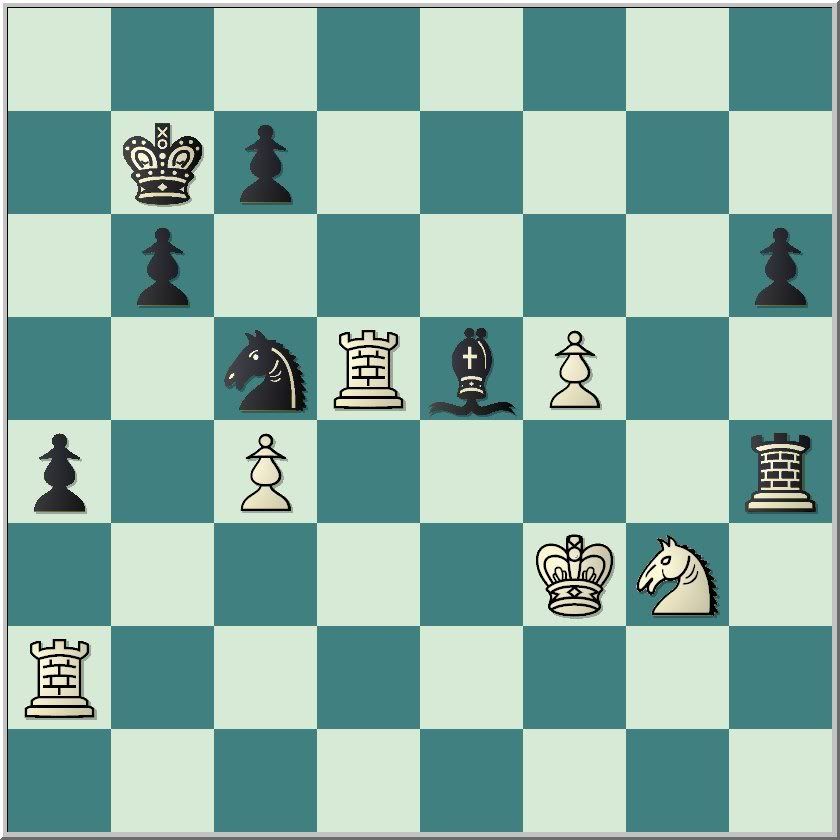 How to Excite a Patzer
How to Excite a PatzerI'm watching Kamsky - Aronian, considering the implications of White's last move. I see the line 50...Bxg3 51.Kxg3 R move and 52.Kxc5 and I think a draw becomes likely. Then, I decide that Aronian must play 50...Bd6 to maintain the tension and the advantage. And he does!
50...Bd6 51.Rxd6 cxd6 52.f6Hiarcs 12 has -2.03
The players have been at the boards for nearly five hours. I've been watching a bit over four: spectating has not prevented my playing taxi driver for my son to school, my wife to work, and finding a few moments for some of my work, much of which is done from home in front of a computer.
52...Ne6 53.Rxa4 Rf4+ 54.Ke3 Rxf6 55.Ra1 Ng5 56.Ne2 Rf3+ 57.Kd4 Kc6Aronian removes Kamsky's most significant threat for counterplay, but the evaluation of Hiarcs 12 drops to -1.55.
9:38am PST; 6:38pm CETA bit over an hour ago, I predicted that three players would be tied in first at the end of play today. These three are still playing. My analysis engines still see an advantage for Dominguez and Aronian, and equality for Movsesian: the results needed to mark my prediction prescient.
Okay, Hiarcs 12 actually sees 0.98 in favor of Karjakin, but the engine is not to be believed in queen endgames, or at least, an alleged one pawn advantage in such endgames really is equality. Both Dominguez and Aronian, however, have an advantage the engine evaluates at 1.80. Dominguez is ahead a pawn in a rook and pawn endgame (often drawish), but the pawns are all connected and his king is closer.
Dominguez - Stellwagen Update
18...a6 19.Rb1 Nc4 20.Qc3 d4 21.Qxd4 Rgd8 22.Qxc4 Qa5+ 23.Qb4 Qd5 24.Be3 Qf3 25.Qxb7+ Qxb7 26.Rxb7+ Kxb7 27.Bd3 Nd5 28.Bd2 Nc3 29.Kf2 Rd4 30.Ke3 Ra4 31.Bxc3 Rxc3 32.h4 Raxa3 33.Kd4 Rc8 34.h5 Ra4+ 35.Ke3 a5 36.h6 Rb4 37.g5 a4 38.h7 Rh8 39.Ra1 Kb6 40.c3 Rb3 41.Rxa4 Rxc3 42.Kd2 Rxd3+ 43.Kxd3 Rxh7 44.Ra8 Kb7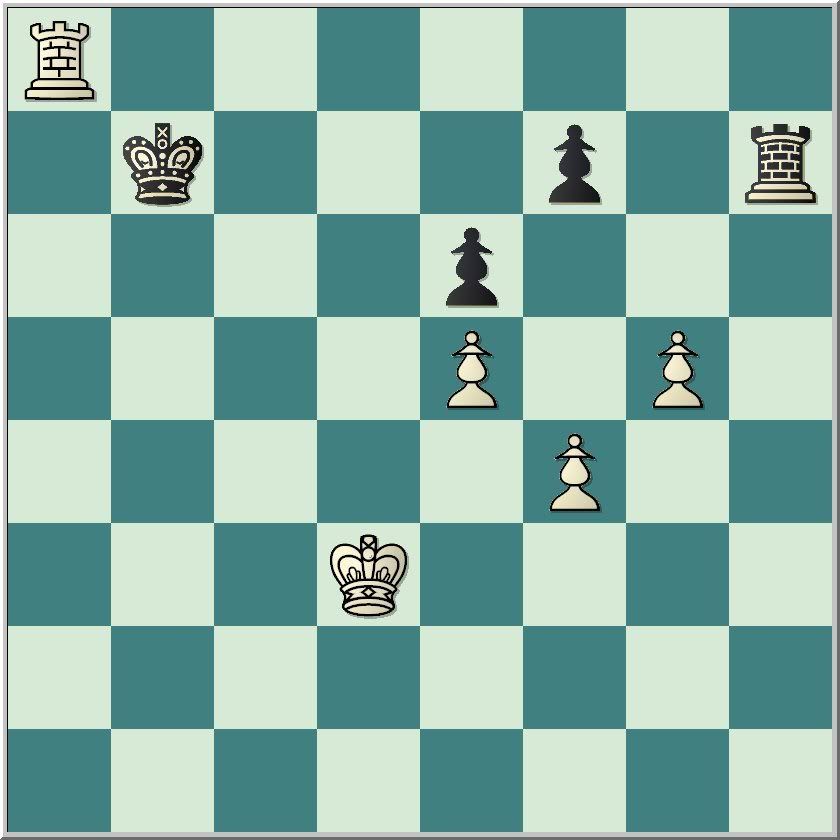 45.Ra1 Rh3 46.Ke2 Rc3 47.Rh1 Kc8 48.Rh7 Rc7 49.g6 fxg6 50.Rxc7 Kxc7 51.Kf3 1-0
45.Ra1 Rh3 46.Ke2 Rc3 47.Rh1 Kc8 48.Rh7 Rc7 49.g6 fxg6 50.Rxc7 Kxc7 51.Kf3 1-0Hiarcs 12 says checkmate in twenty.
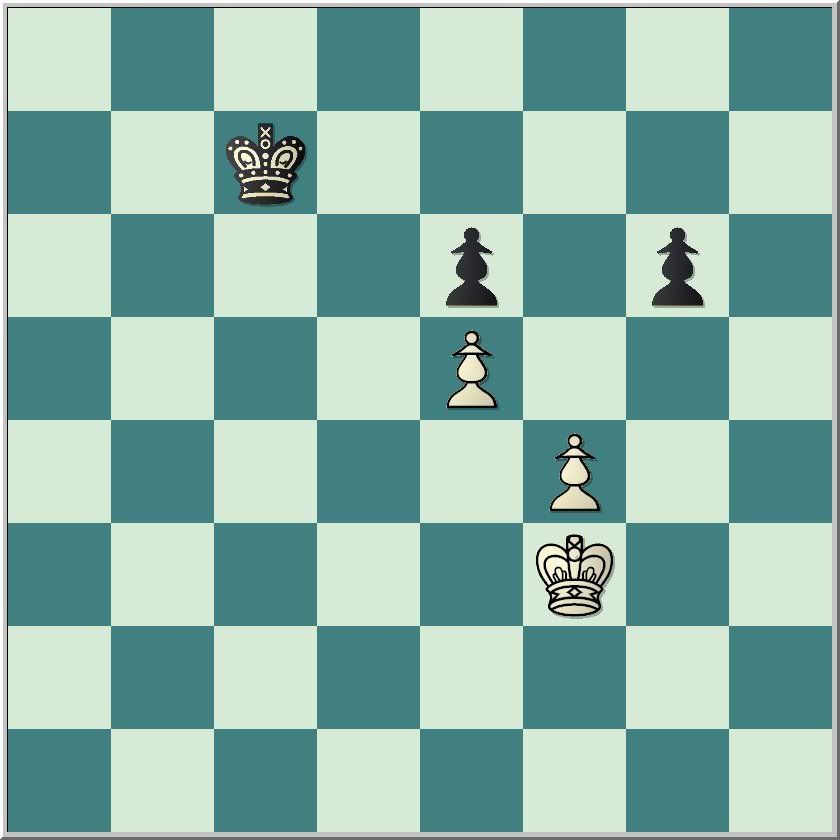 Kamsky - Aronian Update58.Ra8 Rf8 59.Ra7 Ne6+ 60.Ke3 Rf5 61.Rh7
Kamsky - Aronian Update58.Ra8 Rf8 59.Ra7 Ne6+ 60.Ke3 Rf5 61.Rh7Hiarcs 12: -2.02
I Was Wrong: Nostradamus Can Keep His JobKarjakin - Movsesian Update41.b4 Qa2+ 42.Kb5 Qe2+ 43.Qc4 Qe8+ 44.Qc6 Qe2+ 45.Kc5 Qf2+ 46.Kd6 Qg3+ 47.Kd7 h3 48.b7 h2 49.Qc8+ 49...Kg7 50.b8Q Qxb8 51.Qxb8 h1Q 52.Qe5+ Kg8 53.Qd5 Qh3+ 54.Kc7 Qh2+ 55.Kb7 Qh5 56.Kc6 Qh3 57.Kb7 Qh5 58.Qc6 Kg7 59.b5 Qe5 60.b6 g5 61.Kc8 Qf5+ 62.Kd8 Qa5 63.Qd6 Qa8+ 64.Kc7 Qxf3 65.b7 Qc3+ 66.Kd7 Qh3+ 67.Kd8 Qh8+ 68.Kc7 1-0
49...Kg7 50.b8Q Qxb8 51.Qxb8 h1Q 52.Qe5+ Kg8 53.Qd5 Qh3+ 54.Kc7 Qh2+ 55.Kb7 Qh5 56.Kc6 Qh3 57.Kb7 Qh5 58.Qc6 Kg7 59.b5 Qe5 60.b6 g5 61.Kc8 Qf5+ 62.Kd8 Qa5 63.Qd6 Qa8+ 64.Kc7 Qxf3 65.b7 Qc3+ 66.Kd7 Qh3+ 67.Kd8 Qh8+ 68.Kc7 1-0Movsesian could not hold the position.
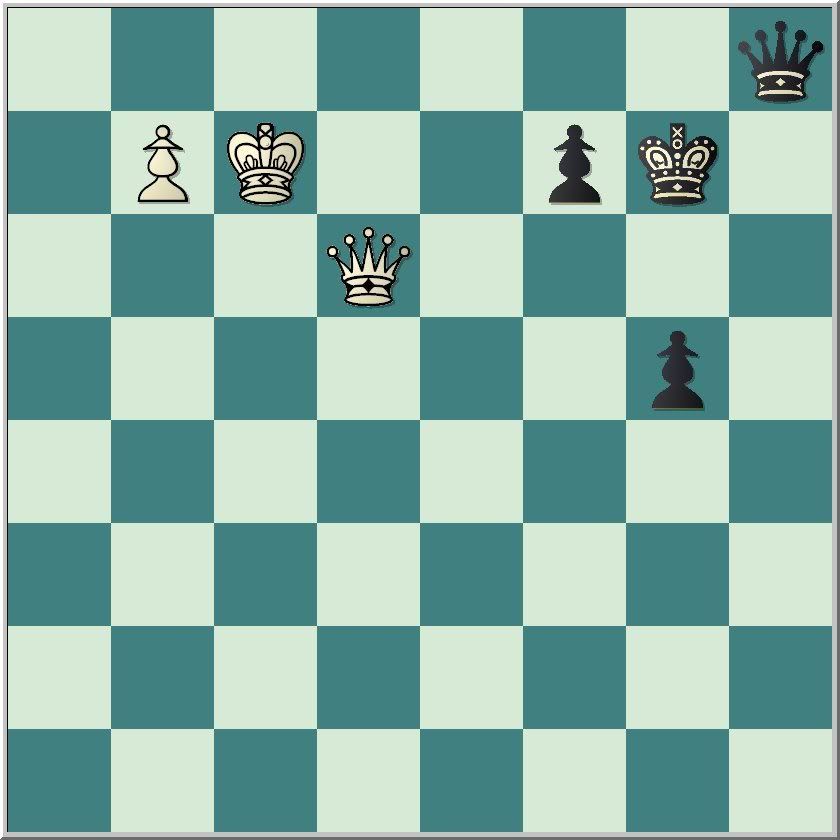
Movsesian drops from the lead; Karjakin joins Dominguez, and Aronian might yet be among them by day's end. The Corus Chess 2009 Grandmaster A Group is wide open. Nearly half of the players still have a reasonable chance to win.
Back to Kamsky - Aronian61...Re5+ 62.Kd2 h5 63.Rh6 Kc5 64.Kd3 Kb4 65.Ng3Hiarcs 12: -2.24
10:25am PST; 7:25pm CET65...Nf4+ 66.Kd4 Rc5 67.Rxd6 Rxc4+ 68.Ke3 b5 69.Rd1Hiarcs 12: -2.45
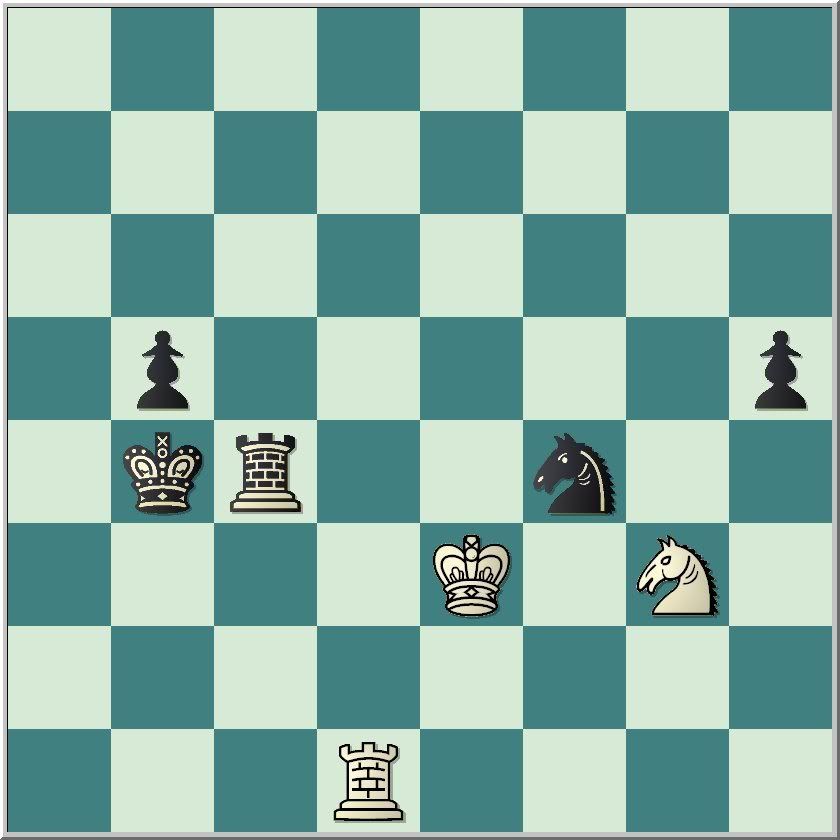 69...Ng2+ 70.Kf3 Nh4+ 71.Ke2 Rc2+ 72.Kf1 Ng2 73.Rb1+ Kc4 74.Nf5 b4 75.Kg1 Kc5 76.Ra1 b3 77.Ra5+ Kb4 78.Ra7 Nf4
69...Ng2+ 70.Kf3 Nh4+ 71.Ke2 Rc2+ 72.Kf1 Ng2 73.Rb1+ Kc4 74.Nf5 b4 75.Kg1 Kc5 76.Ra1 b3 77.Ra5+ Kb4 78.Ra7 Nf4
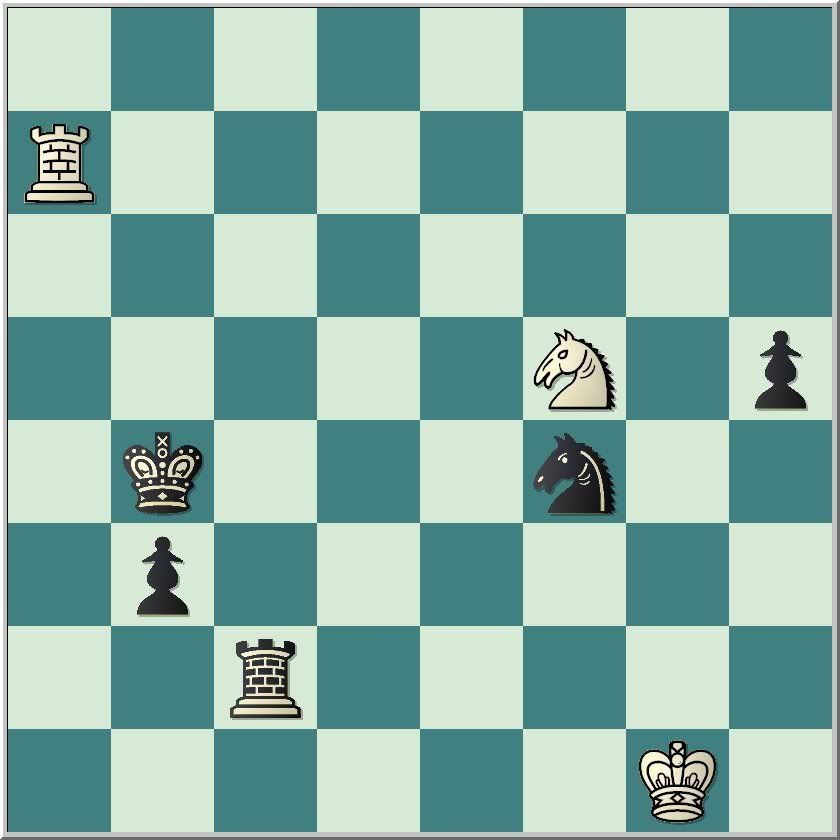
They've been playing six and one half hours.
79.Rb7+ Kc3 80.Ne3 Rc1+ 0-1Bravo Aronian!
Current Standings1. Levon Aronian, Sergei Karjakin, Leinier Dominguez 5 ½
4. Sergei Movsesian, Teymour Radjabov 5
6. Magnus Carlsen, Loek van Wely, Michael Adams, Jan Smeets 4 ½
10. Gata Kamsky, Vassily Ivanchuk, Wang Yue 4
13. Daniel Stellwagen 3 ½
14. Alexander Morozevich 3













